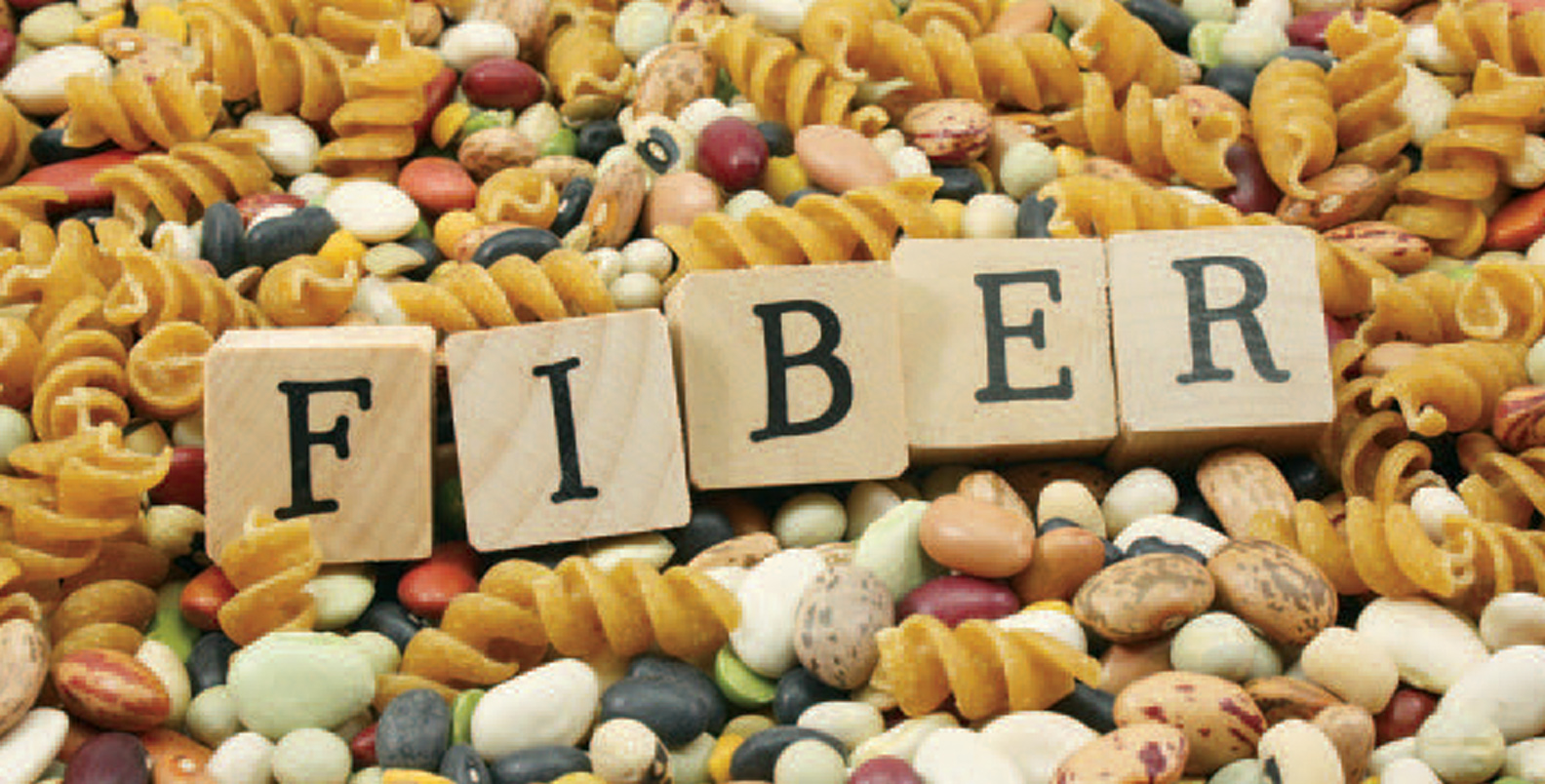Although dietary fiber is not a nutrient as such, it is nevertheless an essential component of our diets. The fact that it passes through the body without getting absorbed is the main reason one should consume it.
Importance of Fiber
Diets with fiber from fruits, vegetables, lentils, beans and whole grains provide other very essential nutrients and components fiber for a good health. Dietary fiber can be categorized into soluble and insoluble fibre. Insoluble fibre helps prevent constipation and facilitate good bowel movement and also has a protective effect on colon cancer. Soluble fibre slows digestion, thus slowing the absorption of carbohydrates and lowering rise in blood glucose.
While prevention of constipation, improved blood glucose levels, and blood lipid profiles predominate as beneficial outcomes of a diet high in dietary fibre, other benefits are worth noting too. For example, because fibre provides bulk in the diet, without added calories, it can have a satiating effect on appetite thus helping in weight management.
Foods with Fiber
Dietary fiber is found in fruits like pears, strawberries, blackberries, raspberries, currants, and oranges. Vegetables like Brussels sprouts, artichoke, onion, garlic, corn, peas, green, beans, and broccoli are extremely rich in fiber content. Pulses like lentils, chickpeas, beans and whole grains like oats are also full of fiber. For South Indians especially, rice is the biggest source of fiber available at all times. Though rice also has carbohydrates, it should not be missed in the everyday diet. The rich fiber content of the rice is very important for a balanced diet. The calorie-conscious can probably eat just one cup of rice but it would be bad to totally give it a miss.
How much Fibre do we Need?
There is nothing called bad fiber but it is good to keep a check on the amount of fiber intake our body gets. Too much soluble fiber can sometimes be a problem because it is fermented by bacteria to produce gas. And if you are prone to an irritable bowel frequently, eat fruits and vegetables in smaller quantities and avoid beans and pulses. Daily intake of a fiber is absolutely essential to the body. 28 – 30 grams of fiber is a good amount of fiber for everyday consumption.
Avoiding refined grains such as white flour, white bread, white pasta, and white rice and replacing them with whole grains is a great way to boost the amount of fiber in your diet. Though dieticians recommend that at least half your grains be whole grains, with all of the whole grain options available now across food products, it is much easier to change our whole lifestyle and adapt to the healthier choice.
Ways to Add Fiber
The food palate of this generation has changed a lot over the past few years. While most of it is leaning towards the bad, there are still some who choose healthier alternatives. If you are someone who has a reasonably good palate and have a mix of Indian and continental healthy options in your diet, there are simple ways to boost your fiber intake.
For instance, you could start your day with a whole grain cereal that has at least 5 grams of fiber. Look at the list of ingredients to be sure that there is whole grain.
Take your time when you are doing your monthly grocery shopping and read the labels of all the products you buy. This will prove to be very beneficial and also, it is a one-month initiative. From next month, owing to experience, you will know what to buy. Choose foods with at least a few grams of fiber per serving. A good source of fiber has 2.5 to 5 grams of fiber per serving and an excellent source of fiber has 5 grams or more per serving. Keep this scale in mind while you shop.Use whole grain bread with at least 2 – 3 grams of fiber per serving. This is for your sandwiches.
Choose whole fruit over fruit juice. Whole fruit can have twice as much the amount of fiber as a glass of juice. Plus the added sugar in juice isn’t going to help you.
Toss beans into your soups, salads and any other dish you think they might go well with. Not only do they provide the fibre content you need, they also provide the crunchy element to otherwise bland dishes!
Experiment with international cuisines such as Mexican or Middle Eastern that use whole grains and beans in their main dishes.Instead of chips and other oily foods, snack on raw vegetables with a hummus dip or any other dip of your liking.
If you are not already taking care of your fiber needs, it is a good time to start now. It is best to boost fiber in your diet gradually and drink plenty of water so that there is a lot of time for your digestive system to adjust. A good rule of thumb is to add about 5 grams of fiber per day, spread throughout the day until you reach your goal.

